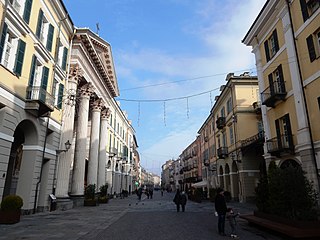
Cuneo is a city and comune in Piedmont, Italy, the capital of the province of Cuneo, the fourth largest of Italy’s provinces by area.

The history of the Jews in Italy spans more than two thousand years to the present. The Jewish presence in Italy dates to the pre-Christian Roman period and has continued, despite periods of extreme persecution and expulsions, until the present. As of 2019, the estimated core Jewish population in Italy numbers around 45,000.

Giovanni Palatucci was an Italian police official who was long believed to have saved thousands of Jews in Fiume between 1939 and 1944 from being deported to Nazi extermination camps. In 2013 a research panel of historians led by the Centro Primo Levi reviewed almost 700 documents and concluded that Palatucci had followed Italian Social Republic and German orders concerning the Jews and enabling the deportation of the majority of the 570 Jews living in Fiume and surrounding areas, 412 of whom were deported to Auschwitz, a higher percentage than in any Italian city. The matter is currently the topic of scholarly debate. A national commission of historians recommended by the Union of the Italian Jewish Communities, the Center for Contemporary Jewish Documentation in Milan, the Italian Ministry of the Interior and the Centro Primo Levi NY is conducting a comprehensive review of the documents.
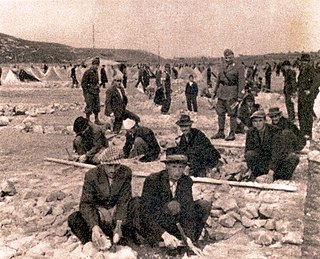
The Rab concentration camp was one of several Italian concentration camps. It was established during World War II, in July 1942, on the Italian-annexed island of Rab.

Campagna is a small town and comune of the province of Salerno, in the Campania region of Southern Italy. Its population is 17,148. Its old Latin name was Civitas Campaniae. Campagna is located in one of the valleys of the Picentini Mountains, at an altitude of 270 meters above sea level.
Ferramonti di Tarsia, also known as Ferramonti, was an Italian internment camp used to intern political dissidents and ethnic minorities. It was located in the municipality of Tarsia, near Cosenza, in Calabria. It was the largest of the fifteen internment camps established by Benito Mussolini between June and September 1940. Over 3,800 Jews were imprisoned at the camp.
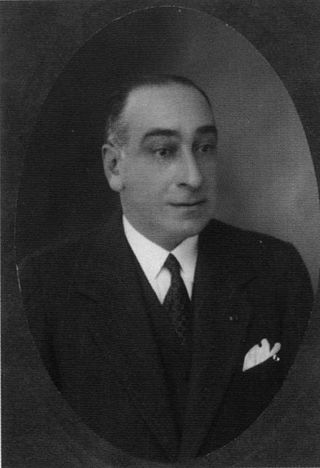
Cavalier Angelo Donati was an Italian banker and philanthropist, and a diplomat of the San Marino Republic in Paris.
Don Raimondo Viale was an Italian Catholic priest, whose name is entered among the Righteous Among the Nations at Yad Vashem for his work on behalf of the Jews during the Holocaust.
Delegation for the Assistance of Jewish Emigrants or DELASEM, was an Italian and Jewish resistance organization that worked in Italy between 1939 and 1947. It is estimated that during World War II, DELASEM was able to distribute more than $1,200,000 in aid, of which nearly $900,000 came from outside Italy.
Monsignor Francesco Repetto was an Italian priest and librarian. He is honored by Jews as a Righteous Among the Nations for his leading role in the clandestine DELASEM organization, which contributed to the saving of thousands of Jews during the Holocaust in Italy during the German occupation.
Leonardo Marinelli was a Commander for the Guardia di Finanza in Tirano, Italy. In 1943 he greatly assisted in the liberation of Jews from an internment camp in Aprica.
The Fossoli camp was a concentration camp in Italy, established during World War II and located in the village Fossoli, Carpi, Emilia-Romagna. It began as a prisoner of war camp in 1942, later being a Jewish concentration camp, then a police and transit camp, a labour collection centre for Germany and, finally, a refugee camp, before closing in 1970.
Servigliano prison camp began as a POW camp for Austrian soldiers of World War I. Following Italy's entry to World War II, the fascist government used it as a concentration camp for civilian and military prisoners between October 1940 to September 1943. The Italian Social Republic later converted it into a deportation camp for Jews between October 1943 and June 1944.
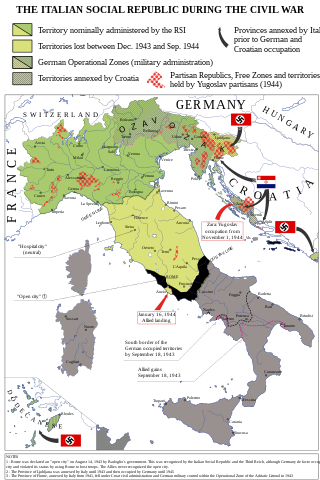
The Holocaust in Italy was the persecution, deportation, and murder of Jews between 1943 and 1945 in the Italian Social Republic, the part of the Kingdom of Italy occupied by Nazi Germany after the Italian surrender on 8 September 1943, during World War II.

San Vittore is a prison in the city center of Milan, Italy. Its construction started in 1872 and opened on 7 July 1879. The prison has place for 600 inmates, but it had 1036 prisoners in 2017.

The Stolpersteine in Croatia lists the Stolpersteine in the Republic of Croatia. Stolpersteine is the German name for stumbling blocks collocated all over Europe by German artist Gunter Demnig. They remember the fate of the Nazi victims being murdered, deported, exiled or driven to suicide.
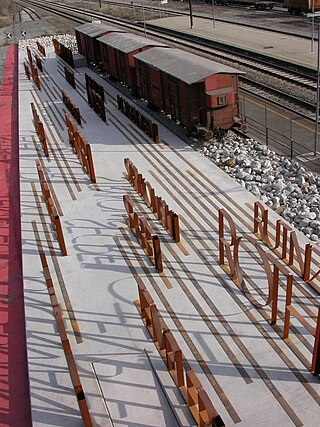
Borgo San Dalmazzo was an internment camp operated by Nazi Germany in Borgo San Dalmazzo, Piedmont, Italy.
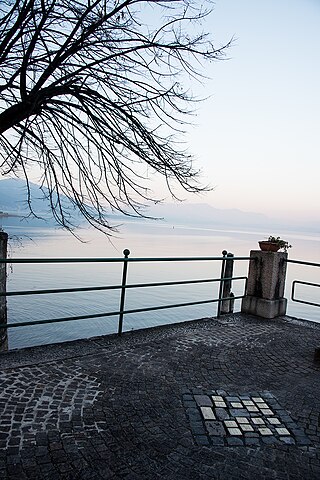
The Lake Maggiore massacres was a set of World War II war crimes that took place near Lake Maggiore, Italy in September and October 1943. Despite strict orders not to commit any violence against civilians in the aftermath of the Italian surrender on 8 September 1943, members of the SS Division Leibstandarte murdered 56 Jews, predominantly Italian and Greek. Many of the bodies were sunk into the lake to prevent discovery but one washed ashore in neighbouring Switzerland, drawing international attention to the massacre and prompting an inconclusive divisional inquiry. It is commonly referred to as the first German massacre of Jews in Italy during World War II.
The RSI Police Order No. 5 was an order issued on 30 November 1943 in the Italian Social Republic to the Italian police in German-occupied northern Italy to arrest all Jews except those born of mixed marriages, which were required to be monitored by the police.

Piero Terracina was an Italian Jewish manager, Holocaust survivor.













